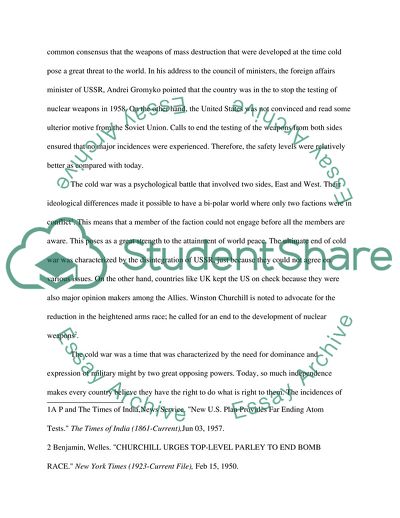Cite this document
(Was the World Safer during the Cold War Case Study Example | Topics and Well Written Essays - 2000 words, n.d.)
Was the World Safer during the Cold War Case Study Example | Topics and Well Written Essays - 2000 words. https://studentshare.org/history/1821637-was-the-world-safer-during-the-cold-war
Was the World Safer during the Cold War Case Study Example | Topics and Well Written Essays - 2000 words. https://studentshare.org/history/1821637-was-the-world-safer-during-the-cold-war
(Was the World Safer During the Cold War Case Study Example | Topics and Well Written Essays - 2000 Words)
Was the World Safer During the Cold War Case Study Example | Topics and Well Written Essays - 2000 Words. https://studentshare.org/history/1821637-was-the-world-safer-during-the-cold-war.
Was the World Safer During the Cold War Case Study Example | Topics and Well Written Essays - 2000 Words. https://studentshare.org/history/1821637-was-the-world-safer-during-the-cold-war.
“Was the World Safer During the Cold War Case Study Example | Topics and Well Written Essays - 2000 Words”. https://studentshare.org/history/1821637-was-the-world-safer-during-the-cold-war.


